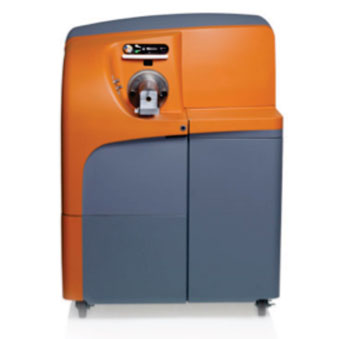Diagnosticians Face Difficulties Distinguishing Chikungunya Virus Infection from Rheumatoid Arthritis
By LabMedica International staff writers
Posted on 11 Feb 2015
A study involving 10 American travelers who contracted Chikungunya virus (CHIKV) infection in Haiti has highlighted the similarities between this viral infection and rheumatoid arthritis and emphasized the difficulty faced by diagnosticians.Posted on 11 Feb 2015
Chikungunya virus is an alphavirus with a positive-sense single-stranded RNA genome of about 11.6 kilobases. It is a member of the Semliki Forest virus complex and is closely related to the viruses that cause eastern equine encephalitis and western equine encephalitis. In the United States, it is classified as a category C priority pathogen and work with the virus requires biosafety level III precautions. Human epithelial and endothelial cells, primary fibroblasts, and monocyte-derived macrophages are permissive for CHIKV in vitro, and viral replication is highly cytopathic, but susceptible to type-I and -II interferon. In vivo, CHIKV appears to replicate in fibroblasts, skeletal muscle progenitor cells, and myofibers. CHIKV infection causes a fever, rash, and severe joint pain in the hands, feet, knees, neck, and elbows. The fever and rash typically subside in seven to 10 days, but symptoms of arthritis may persist for 12-15 months in up to 60% of patients. Some patients' symptoms may persist for three years or more.

Image: The CyTOF2 mass cytometer (Photo courtesy of Fluidigm).
As little is known about the rheumatologic and immunologic features of CHIKV arthritis in humans, particularly as compared to rheumatoid arthritis (RA), investigators at Washington University School of Medicine (St. Louis, MO, USA) compared diagnostic features of CHIKV infection to those of RA.
To this end they used advanced cell biology instruments to analyze blood samples from 10 individuals who became infected with CHIKV in Haiti in June 2014 and from RA patients and healthy controls.
The most important diagnostic tool used in the study was the Fluidigm (San Francisco, CA, USA) CyTOF2 Mass Cytometer. This instrument enables simultaneous detection of many proteins in single-cell biology and boosts understanding of both cell type and function at the single-cell level. Using stable metal isotopes and time-of-flight mass cytometry, the CyTOF2 provides more than 120 detection channels for analysis of blood cell components. The investigators used the CyTOF2 to analyze peripheral blood mononuclear cells in CHIKV-infected patients, healthy controls, and patients with untreated, active RA.
All patients with CHIKV arthritis had detectable anti-CHIKV IgG. Among the ten CHIKV-infected individuals, eight developed persistent symmetric polyarthritis, and otherwise met the 2010 American College of Rheumatology (ACR)/European League Against Rheumatism (EULAR) criteria for (seronegative) RA. CyTOF analysis revealed that RA and CHIKV-infected patients had greater percentages of activated and effector CD4+ and CD8+ T-cells than healthy controls.
"For now, good travel histories of patients are among the best diagnostic tools for physicians," said senior author Dr. Wayne Yokoyama, professor of medicine at the Washington University School of Medicine. "Recent travel to the Caribbean, Central and South America, Africa, India, or other areas where the virus is prevalent should raise suspicions of Chikungunya infection. In addition, the disease typically starts with high fever and abrupt onset of severe pain in the joints, which are not usually seen with rheumatoid arthritis. All eight patients with Chikungunya-related arthritis met the American College of Rheumatology's criteria for a diagnosis of rheumatoid arthritis. Their recent travel to Haiti led us to suspect they had Chikungunya virus infections."
The investigators have established an online registry (please see Related Links below) to build a database for studying the virus in more detail.
The CHIKV-arthritis study was published in the January 20, 2015, online edition of the journal Arthritis and Rheumatology.
Related Links:
Washington University School of Medicine
Fluidigm
CHKV Registry













